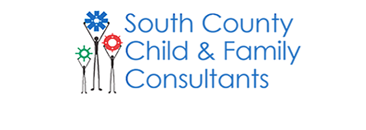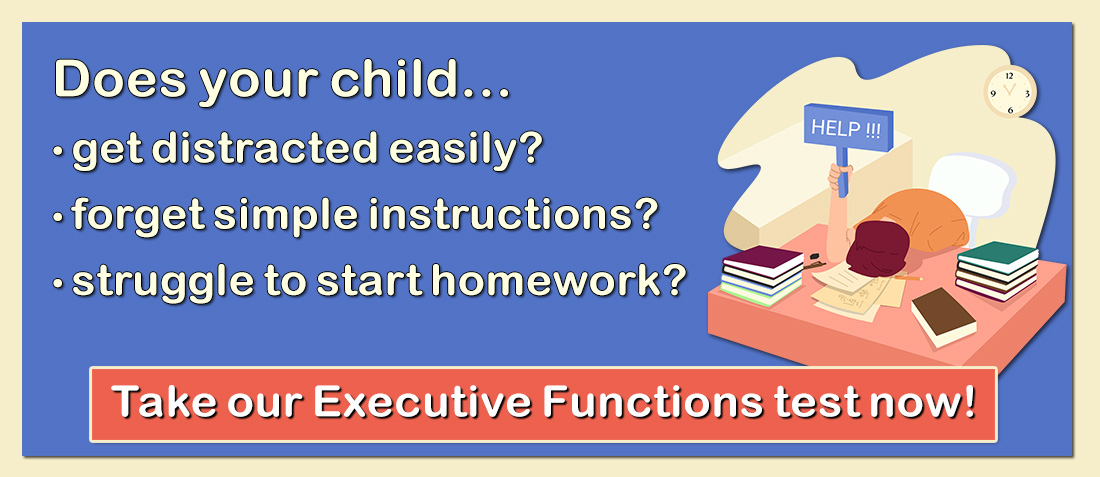Asperger’s Disorder falls within the diagnostic category of Pervasive Developmental Disorders, as classified by the Diagnostic and Statistical Manual 4th edition (DSM-IV). Asperger’s Disorder is also considered to be one variety of an Autistic Spectrum Disorder (ASD), and is also sometimes referred to as a Social Communicative Disorder. Children with Asperger’s Disorder often experience difficulty in social conversation and may engage in one-sided, long-winded conversations without noticing if the other person is interested or not. They may also speak in a monotonous, rigid, or unusually fast manner. Many children with Asperger’s Disorder do not appear to understand or relate to others’ feelings. Because of this, they may not have friends or may have strained peer relations.
 These children are often very intelligent individuals who may be characterized as inflexible and having very specific areas of interests. They may be considered eccentric by others, given peculiarities in their speech and motor activities. Youngsters with Asperger’s Disorder may be insensitive to nonverbal behaviors such as eye contact, facial expressions, and understanding kinesthetic cues like personal space. They may not seek out or respond to others’ interests. They frequently display hypersensitivity to noises or sometimes smells, which may impair social performance in day-to-day functioning as they seek to avoid sensory characteristics not evident to others. They sometimes have awkward body postures and move clumsily, displaying poor coordination. While some children with Asperger’s Disorder may be in gifted classes, these youngsters often demonstrate a wide range of cognitive skills. However, the may struggle with subjects that call for inferential reasoning, abstract concepts, problem-solving, extensive calculation or social judgment. Fine-motor problems can lead to poor penmanship and low writing motivation, while gross-motor clumsiness can lead to poor skills in competitive sports and physical activities. Peers often view students with Asperger’s Disorder as socially vulnerable and easy targets for teasing and bullying, setting the stage for low school motivation, depression, and frequent absences.
These children are often very intelligent individuals who may be characterized as inflexible and having very specific areas of interests. They may be considered eccentric by others, given peculiarities in their speech and motor activities. Youngsters with Asperger’s Disorder may be insensitive to nonverbal behaviors such as eye contact, facial expressions, and understanding kinesthetic cues like personal space. They may not seek out or respond to others’ interests. They frequently display hypersensitivity to noises or sometimes smells, which may impair social performance in day-to-day functioning as they seek to avoid sensory characteristics not evident to others. They sometimes have awkward body postures and move clumsily, displaying poor coordination. While some children with Asperger’s Disorder may be in gifted classes, these youngsters often demonstrate a wide range of cognitive skills. However, the may struggle with subjects that call for inferential reasoning, abstract concepts, problem-solving, extensive calculation or social judgment. Fine-motor problems can lead to poor penmanship and low writing motivation, while gross-motor clumsiness can lead to poor skills in competitive sports and physical activities. Peers often view students with Asperger’s Disorder as socially vulnerable and easy targets for teasing and bullying, setting the stage for low school motivation, depression, and frequent absences.
Recommendations
1. Consult with an occupational therapist or psychologist who is able to evaluate children with Asperger’s Disorder if you notice the following symptoms:
- significantly impaired social skills
- adequate or precocious vocabularies but difficulty in listening and responding to others
- one or more special interests that are all-encompassing
- eccentric ways of playing
- unusual sensory sensitivities
- inflexibility and the need for “sameness”
- difficulty understanding nonverbal communication (e.g. facial expressions, body language)
- abstract language
- poor motor coordination
2. Youngsters with Aspergers Disorder can benefit from specialized speech/language therapy. This therapy helps children who have trouble with the pragmatics of speech or the give-and-take of normal conversation. They may also qualify for occupational therapy and behavioral consultations within the school setting.
3. Teach children how to respond in a social situation by describing the situation and providing specific scripts to follow. Offer visual depictions by creating comic-strip cartoons to freeze a scene in social situations and rework it to a more satisfying ending. Show youngsters video clips of a few types of behavior that you would like them to demonstrate.
4. Use imitation and role-modeling paired with reinforcements such as praise and rewards (e.g. special attention, praise, a short break, a favorite activity) as often as possible.
5. Identify and teach relaxation techniques that help your child deal with frustration and anger. Strategies could include exercising, taking a time-out, drawing, practicing conscious breathing, and listening to a relaxation tape.
6. Provide ample opportunity for structured peer activities. If possible, enroll your child in a social skills group that focuses on children with Asperger’s Disorder. This would provide hands-on support for peer relationships and allow the child to gain more practice with specific skills such as asking questions.
7. Determine your child’s most problematic behaviors. Provide the youngster with clearly spelled-out, specific guidelines, instructions, expectations, and consequences for engaging in those behaviors. Some children with Asperger’s Disorder benefit from visual depictions of an area of difficulty. Draw a pie-chart and have them complete the size of the slices of the pie based on their experience. For instance, invite them to draw slices that correspond to difficulties such as with peers (being bullied, not getting along, feeling lonely), teachers (feeling misunderstood, wanting to complete a problem in a different way) and the environment (too noisy, lights are too bright). Visuals of schedules and rules combined with verbal directions are much more effective than simple verbal cues for children with Asperger’s Disorder.
8. Use social stories to prepare children for upcoming social situations or transitions. Write a brief story in which the child is the main character. In the story, describe what will happen to the main character and what the expectations are during the upcoming social situation or transition.
9. Children’s video-game play can be used as an opportunity for improving their perspective-taking abilities. Ask children to teach you how to play a game that they particularly enjoy. Inform them that you know nothing about the game and will need them to start by explaining the basics and then proceed in an orderly fashion. It is often best to let them teach you without interruption and then later go back and have them re-teach you, giving them feedback each step of the way about how they are informing you and understanding your lack of knowledge.
10. Massive multi-player online games (MMORPGs) can be a useful tool to help improve your child’s communication skills. Be sure to include personal or face-to-face interactions, as well as online interactions. This can be done by joining the game and participating with the child in the game-based activities. You could also allow children to play these games if, and only if, they play with a peer or a classmate they see outside of the game.
(*Use MMORPGs cautiously with children who have any type of Autistic Spectrum Disorder. These children can become fixated on these games due to the high levels of engagement, the opportunity for less personal interaction with others, and the complexities of the games. Children who are not prone to becoming overly-involved in this type of isolating, video-game play may find this to be a useful tool.)
11. Additional digital technologies and video games can serve as a gateway to improving communication skills for children with Asperger’s Disorder. For example, text messaging may be an easier way for a child who may feel anxious in social situations to communicate. Again, the key for parents is to encourage children to go beyond the texting, instant messaging, or e-mailing to have some face-to-face interactive opportunities with their peers.
Websites
LearningWorks for Kids: The premier site for executive-function information, this site provides a wealth of up-to-date tips and recommendations for children with all types of disorders and disabilities.
National Institute of Neurological Disorders and Stroke: This site explains what Asperger’s Disorder is, common symptoms of the disorder, diagnosis, causes, and treatment.
Online Asperger Syndrome Information and Support: This site provided a number of articles and educational resources, as well as links to support groups, professionals, and support message boards.
Kids Health: This article explains what Asperger’s Disorder is and explains the common signs of the disorder, as well as causes, diagnosis, and treatment options.
Autism Asperger Publishing Company: Offers information on books, resources, and conferences on Asperger Disorder, Autistic Spectrum Disorder, and other pervasive developmental disorders.
University of Michigan Health System: This site offers informations, resources, and support for parents of children with Asperger’s Syndrome.
Books
Attwood, Tony. (2008). The Complete Guide to Asperger’s Syndrome. London, England: Jessica Kingsley. Highly readable book with clear recommendations.
Bolick, Teresa. (2004). Asperger Syndrome and Adolescence: Helping Preteens and Teens Get Ready for the Real World. Gloucester, MA: Fair Winds Press. Chapters on friendship and social skills.
Bolick, Teresa. (2004). Asperger Syndrome and Young Children: Building Skills for the Real World. Gloucester, MA: Fair Winds Press. Chapters on friendship and social skills.
Boyd, Brenda. (2003). Parenting a child with Asperger Syndrome: 200 Tips and Strategies. London, England: Jessica Kingsley. Easy to read, practical, and realistic. Helps parents to respond positively.
Klin, Ami, Fred R. Volkmar, and Sara S. Sparrow, eds. (2000). Asperger Syndrome. New York, NY: The Guilford Press. A scholarly discussion of Asperger’s Disorder and related disorders.
Ozonoff, Sally, Geraldine Dawson, and James McPartland. (2002). A Parent’s Guide to Asperger Syndrome and High-Functioning Autism: How to Meet the Challenges and Help Your Child Thrive. New York, NY: The Guilford Press. Tells what Asperger’s is, as well as what happens to children with the syndrome.
Romanowski Bashe, Patricia et al. (2005). The OASIS Guide to Asperger Syndrome: Completely Revised and Updated: Advice, Support, Insight, and Inspiration. New York: Crown Publishers. Doctors and families explain Asperger’s Disorder. Includes how to gain access to information, support and treatment for child, the most up-to-date options available, and advice on new medications and special education.
Silverman, Stephen and Rich Weinfeld. (2007). School Success for Kids With Asperger’s Syndrome: A Practical Guide for Parents and Teachers. Waco, TX: Prufrock Press Inc. Advice for parents, including approaches to working with schools and providing interventions at home.
Books on Asperger’s Disorder for Children
Buron, Kari D. (2007). A 5 is Against the Law! Social Boundaries: Straight Up! An Honest Guide for Teens and Young Adults. Arlington, TX: Autism Asperger Company. Offers suggestions for the proper way to act in social settings. For teens.
Jackson, Luke. (2002). Freaks, Geeks and Asperger Syndrome: A User Guide to Adolescence. London, England: Jessica Kingsley. A guide written by a young boy growing up with Asperger’s Disorder. Ages 12 & up.
Molloy, Harvey and Latika Vasil. (2004). Asperger Syndrome, Adolescence, and Identity: Looking Beyond the Label. London, England: Jessica Kingsley. Discusses Asperger’s Disorder and tackles the issues commonly dealt with by teens who have this disorder. For teens.
Schnurr, Rosina G. (1999). Asperger’s Huh? A Child’s Perspective. Ontario, Canada: Anisor Publications. Explains Asperger’s Disorder from a child’s point of view. Ages 6-12.
Willey, Liane H. (2003). Asperger Syndrome in Adolescence: Living with the Ups, the Downs and Things in Between. London, England: Jessica Kingsley. An engaging book with chapters written by children with Asperger’s regarding what adolescence is like with this syndrome. Provides some therapeutic methods to deal with it. For teens.
Receive online class information and helpful tips from Dr. Randy Kulman's LearningWorks for Kids |



